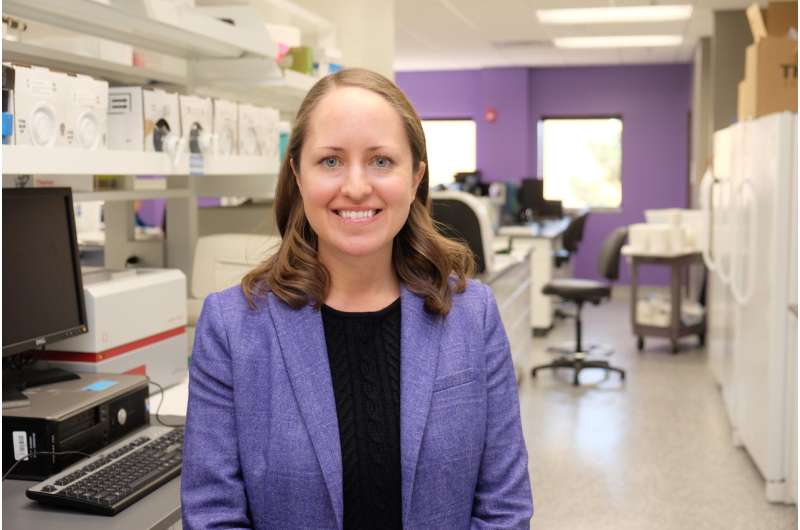Researcher studies risk of African swine fever in animal feed

If African swine fever virus reaches the U.S., it could cause more than $16.8 billion in economic losses to swine and other industries. It would devastate trade and international markets, researchers say.
Megan Niederwerder, Kansas State University assistant professor of diagnostic medicine and pathobiology in the College of Veterinary Medicine, wants to prevent that.
Her latest research has found that African swine fever could survive in a simulated feed shipment across the ocean, which suggests that feed may be a potential way that pathogens such as African swine fever virus spread.
The research appears in the journal PLOS ONE in the collaborative publication, "Survival of viral pathogens in animal feed ingredients under transboundary shipping models." It is the first publication demonstrating the survival of African swine fever virus in feed ingredients.
"The ultimate goal of our research is to understand what mitigation tools may be utilized to reduce the risk of African swine fever virus being introduced, whether in the country of origin or once feed arrives in the U.S.," Niederwerder said.
Since 2007, African swine fever virus, or ASFV, has spread throughout Eastern Europe and Russia but is not present in the U.S. There is no vaccine or cure for the disease, which causes hemorrhagic fever and high mortality in pigs. It does not infect humans.
Niederwerder is collaborating with Kansas State University's Biosecurity Research Institute to continue studying the risk of African swine fever virus in feed and feed ingredients. She is studying the whole swine feed transport cycle—from the shipment of feed as it is imported to the U.S. to when swine consume their feed on the farm.
"This research is extremely important to the swine industry, not only in Kansas and the U.S. but also around the world," Niederwerder said. "There are many countries, including the U.S., that are currently free of ASFV and it is critical to understand how we prevent this virus from being introduced. Through this research, we seek to understand and further define the risk of ASFV transmission when consumed in feed, a recently identified risk factor for the introduction of swine pathogens."
African swine fever is one of the diseases slated to be researched at the National Bio and Agro-defense Facility or NBAF, which is under construction adjacent to Kansas State University's Manhattan campus. Niederwerder's work at the Biosecurity Research Institute will provide the foundational knowledge that can then transition into further studies at the NBAF once it is fully functional.
Niederwerder's research is organized into three parts:
- Understanding if the virus survives in feed ingredients using a transboundary model that simulates the shipment of feed from other countries into the U.S.
- Determining the oral dose of African swine fever virus necessary in feed to cause infection.
- Identifying mitigants that reduce or eliminate the risk of African swine fever virus transmission in feed ingredients, including any additives that may inactivate the virus in swine feed.
Niederwerder and her team are performing the research in a biosafety level-3 laboratory at the Biosecurity Research Institute. They have been studying 5-gram amounts of complete feed and feed ingredients, some of which include soybean meal, lysine, dried distillers grains, choline and vitamin D.
Researchers place the ingredients in 50-milliliter tubes in an environmental chamber and use meteorological data to program the chamber's temperature and humidity, which mimics a cargo ship's journey from Eastern Europe to North America. For example, the trans-Atlantic model that simulates travel from Eastern Europe takes 30 days.
The researchers then study if the virus is still present at a dose infectious to pigs after the simulated shipment and if there are any additives that may stop the virus from spreading through feed.
"Our aim is to understand if we can mitigate this risk and protect the U.S. swine industry from the introduction of African swine fever as well as other foreign animal diseases," Niederwerder said.
More information: Scott A. Dee et al. Survival of viral pathogens in animal feed ingredients under transboundary shipping models, PLOS ONE (2018). DOI: 10.1371/journal.pone.0194509
Journal information: PLoS ONE
Provided by Kansas State University

















